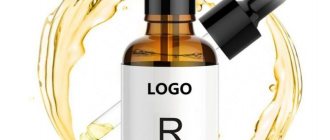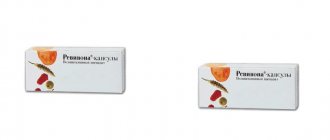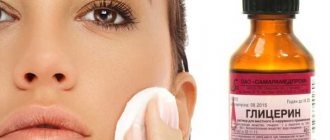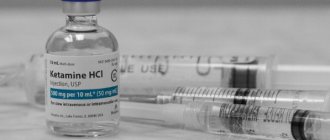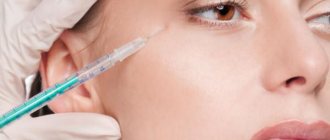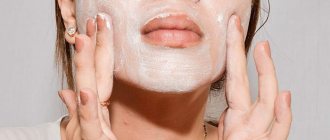It is perhaps difficult to find a person who has not heard the word “antioxidants”. Various distributors of anti-aging potions and preparations are very fond of speculating with this term. And most often this word has a magical effect on the consumer. If you mention that a particular product contains antioxidants, then this increases interest in the product significantly, although no one can really explain what kind of “beast” this antioxidant is and why it is needed at all. For most, this definition is associated with incredible benefits, and therefore anything that contains antioxidants should be consumed frequently and in exorbitant quantities. Is this really so and what are the incredible benefits of these same antioxidants, and where can you get them?
Antioxidants: what are they?
Before defining this concept, we should consider a related one - the free radical theory of aging, in connection with which these same antioxidants have gained popularity, the benefits of which everyone knows today. This theory was first put forward by Denham Harman back in the 50s of the last century. The brief essence of the free radical theory of aging is that the cause of aging in the body is cell damage caused by free radicals. Free radicals are particles (atoms or molecules) that in their structure contain unpaired electrons at the outer electronic level. Free radicals cause damage to proteins, lipids, nucleic acids and other types of biomolecules. Damage to cells by free radicals leads to disorders in the body and, as a result, to aging and death. There is an assumption that mitochondria are involved in the formation of free radicals.
What are free radicals? Free radicals are reactive forms of oxygen, which are produced by mitochondria. How to neutralize the effect of free radicals on the body? First of all, you need to follow a low-calorie diet - we will consider this issue below. There is also a version that accelerated metabolism is the cause of oxidation of the body and the formation of free radicals. Versions have already been expressed more than once in scientific and pseudo-scientific circles that life expectancy depends on breathing rate. That is, the more often we breathe, the shorter our life expectancy. And if we consider this theory using the example of animals with different respiratory rates, then it fully justifies itself.
For example, a dog that breathes too frequently lives at best for a couple of decades, while a turtle that breathes about two per minute can live over 500 years. Thus, it can be assumed that the respiratory rate actually influences the rate of oxidation of the body, as a result of which it ages. It is also worth paying attention to professional athletes who, due to extreme physical exertion, regularly perform rapid breathing: their career most often ends by the age of 30, and by this time their health in most cases leaves much to be desired. It is possible that the reason for this is an inadequate frequency of respiratory cycles on a regular basis.
How can we neutralize the effect of free radicals on our body and prevent cell oxidation?
- First, change your breathing rate. If the theory is that accelerated metabolism, which occurs as a result of high breathing rates, leads to aging, then you should gradually accustom yourself to deeper breathing and thereby reduce its frequency. For this, there is a special breathing practice Apanasati Hinayana, as a result of which we gradually stretch our breathing and thereby slow down our metabolism.
- Secondly, the human internal antioxidant system should be launched. The human body has already developed a system for rejuvenation and restoration of damaged cells; you just need to adjust its functioning. The pineal gland in the human brain produces the most important hormone - melatonin, which has a powerful antioxidant effect. The function of the pineal gland is inhibited by an incorrect daily routine (primarily staying awake at night) and an unhealthy diet with a predominance of fatty, fried, flour, sweet, salty and the presence of animal foods in the diet. Inverted asanas will help improve the functioning of the pineal gland and the production of the hormone melatonin.
- Thirdly, you should eat natural foods that contain natural antioxidants.
Antioxidant Products
As already mentioned, to neutralize the effects of free radicals on our body, we should follow a low-calorie diet. Fresh vegetables and fruits saturate our body with inhibitors of free radical reactions - antioxidants. Antioxidants can be enzymatic, that is, produced by our body, and non-enzymatic, that is, coming from the outside. In principle, nature designed it so that each cell itself can destroy free radicals entering the body, but if the amount of these free radicals exceeds the norm, then enzymatic antioxidants become insufficient. In this case, non-enzymatic antioxidants, that is, those supplied with food, will come to the rescue. The main non-enzymatic antioxidants are:
- vitamin C,
- vitamin E,
- provitamin A,
- lycopene,
- flavin and flavonoids,
- tannins,
- anthocyanins.
Vitamin C, vitamin E and provitamin A are found in fresh fruits, and lycopene is found in tomatoes. Flavin and flavonoids are found in fresh vegetables, tannins are found in cocoa, coffee and tea, but given the negative consequences that these drinks have, it is better to exclude them, since there will be more harm than good. Anthocyanins are found in berries, mainly red ones.
Need to know
It is difficult to say how important each individual antioxidant is in the human body and what it is needed for. Firstly, there are a lot of them. Secondly, tests cannot tell exactly how one or another of them works when it enters the digestive system and bloodstream, and what level is contained. In a living organism, it must first be absorbed in the intestine, then enter the corresponding organ in sufficiently high concentrations, and then into a certain part of the cell that is damaged by free radicals. As you can see, this is a long process. In addition, they can form thousands of different compounds with each other.
It is necessary that there is a balance between antioxidants and oxidizing agents. The solution seems obvious: you just need to give your body as many natural antioxidants as possible to neutralize all free radicals. But it's not that simple.
Antioxidants became popular in the 90s, during which time scientists discovered a link between free radicals and a variety of chronic diseases such as cancer, diabetes and blindness. Although this connection has not been fully studied, medications, anti-aging pills, various powder supplements and complexes have already flooded the market and pharmacies. Antioxidant therapy has become popular. The effectiveness and efficiency of these products, although far from the promises of the manufacturers, nevertheless they nourish cells and protect against diseases naturally and without side effects.
Men who consume a lot of lycopene have a significantly lower risk of developing prostate cancer. Lutein, which is found in large quantities in corn and spinach, reduces the risk of lens degeneration in the eyes and associated blindness in old age. It is believed that flavonoids, or more precisely catechins, contained in green teas, reduce the incidence of heart disease. And coffee is good for certain liver diseases, even cancer.
Is there any catch to this? Everything should be in moderation, this should not be forgotten. Too many strong antioxidants suppress the body's ability to turn on the antioxidant defense system. But getting enough of them from your diet is not entirely easy, so experts recommend sticking exclusively to natural sources.
Artificial supplements mostly have a placebo effect, and some studies have found that they may have a negative effect on certain diseases, such as lung and skin cancer.
For example, vitamin A (beta-carotene) is associated with an increased risk of lung cancer in smokers when taken in large quantities, while at the same time reducing the risk of breast cancer.
Antioxidants in food: table
This table shows the amount of antioxidants per 100 grams of product. Antioxidants are mainly found in fresh vegetables, fruits, berries and nuts. In canned or heat-treated fruits, their quantity is reduced or absent.
| The product's name | Product weight | Amount of antioxidants |
| Papaya | 100 g | 300 |
| Paprika | 100 g | 21932 |
| White peppers | 100 g | 40700 |
| Red peppers | 100 g | 19671 |
| Fresh eggplant | 100 g | 932 |
| Beans raw | 100 g | 799 |
| Brazilian nut | 100 g | 1419 |
| Fresh broccoli | 100 g | 3083 |
| Vanilla | 100 g | 122400 |
| Ripe cherries | 100 g | 3747 |
| Grapes white, green | 100 g | 1018 |
| Red grapes | 100 g | 1837 |
| Black grapes | 100 g | 1746 |
| Fresh blueberries | 100 g | 4669 |
| Frozen peas | 100 g | 600 |
| Fresh celery | 100 g | 552 |
| Fresh plum | 100 g | 6100 |
| Soybeans | 100 g | 962 |
| Fresh tomato | 100 g | 546 |
| Raw pumpkin | 100 g | 483 |
| Raw pistachios100 | 100 g | 7675 |
| Fresh pineapples | 100 g | 385 |
| Fresh oranges | 100 g | 2103 |
| Peanuts raw | 100 g | 3166 |
| Ripe watermelons | 100 g | 142 |
| Raw hazelnuts | 100 g | 9645 |
| Mustard | 100 g | 29257 |
| Fresh pomegranates | 100 g | 4479 |
| Fresh grapefruits | 100 g | 1548 |
| Walnuts raw | 100 g | 13541 |
| Raw pear | 100 g | 2201 |
| Fresh strawberries | 100 g | 4302 |
| Fresh white cabbage | 100 g | 529 |
| Cardamom | 100 g | 2764 |
| Curry | 100 g | 48504 |
| Fresh potatoes | 100 g | 1098 |
| Fresh kiwi | 100 g | 862 |
| Fresh cranberries | 100 g | 9090 |
| Cinnamon | 100 g | 131420 |
| Fresh gooseberries | 100 g | 3332 |
| Black peppers | 100 g | 34053 |
| Sweet peppers | 100 g | 821 |
| Fresh peach | 100 g | 1922 |
| Ripe bananas | 100 g | 795 |
| Fresh basil | 100 g | 4805 |
| Dried basil | 100 g | 61063 |
| Fresh corn | 100 g | 728 |
| Raisin | 100 g | 4188 |
| Lemons | 100 g | 1346 |
| Fresh apricots | 100 g | 1110 |
| Avocado fresh | 100 g | 1922 |
| Fresh raspberries | 100 g | 5065 |
| Fresh mandarin | 100 g | 1627 |
| Fresh carrots | 100 g | 436 |
| Papaya | 100 g | 300 |
| Paprika | 100 g | 21932 |
| Fresh radish | 100 g | 1750 |
| Fresh salad | 100 g | 1532 |
| Raw beets | 100 g | 1776 |
| Artichokes raw | 100 g | 6552 |
| Olive oil | 100 g | 372 |
| Fresh cucumbers | 100 g | 232 |
| Fresh blueberries | 100 g | 5905 |
| Prunes | 100 g | 8059 |
| Chile | 100 g | 23636 |
Foods High in Antioxidants
The leaders in antioxidant content are:
- By vitamin C content: Barbados cherries, green sweet peppers, parsley, Brussels sprouts, dill, wild garlic, kiwi, garden strawberries, apples, fresh rose hips, red bell peppers, walnuts, lemon, orange, grapefruit, tangerine, pine and fir needles .
- By vitamin E content: cold-pressed vegetable oils, carrots, potatoes (raw), buckwheat, lettuce, spinach, hazelnuts, pine nuts, Brazil nuts, olives, dried apricots, turnip tops.
- According to the content of provitamin A: sorrel, parsley, apricot, red cabbage, peach, turnip, dandelion, carrots, chervil, sea buckthorn, rose hips, celery, wild garlic, mango, melon, lettuce, pumpkin, broccoli.
- Lycopene content: tomatoes, tomato sauce, tomato paste, watermelon, grapefruit, guava, rose hips, papaya, persimmon.
- According to anthocyanin content: blackberries, raspberries, blueberries, cranberries, cherries, serviceberries, elderberries, black currants, grapes, plums, pomegranates, eggplants, basil, red leaf lettuce, red cabbage.
The best vitamin complexes with antioxidants
Since some vitamins are natural antioxidants, many pharmaceutical complexes help restore the body's protective functions and neutralize free radicals.
Among the best drugs are:
- Vitrum Antioxidant. A complex with pronounced antioxidant properties. Reduces the risk of cardiovascular and cancer diseases, slows down the aging process, and enhances the body's natural defenses. The cost of packaging is approximately 600-700 rubles.
- Selzinc Plus. Supplement in tablet form containing a complex of microelements and vitamins with powerful antioxidant properties. The cost of packaging is approximately 350 rubles.
- Triovit. The composition of the drug is based on fat-soluble antioxidants, which protects cell membranes, prevents excessive oxidation and fights free radicals. Triovit is available in capsules, the cost of a package is on average 250 rubles.
- Vitamin E Zentiva. The composition contains tocopherol acetate, which regulates metabolic processes and has pronounced antioxidant properties. Available in convenient capsule form. You can purchase the drug for 260-350 rubles.
- Synergin. A unique combination of 6 powerful natural lipophilic and water-soluble antioxidants, each of which works more effectively due to the right concentration. Release form: capsules. The cost of packaging is 500-600 rubles.
What foods contain antioxidants?
Antioxidants are found in the following foods: prunes, plums, rowan berries, currants, pomegranate, mangosteen, acai, sea buckthorn, blueberries, grapes, cranberries, chokeberries, black plums, raisins, blackberries, strawberries, kiwi, fresh apples with peel, tangerines, gooseberries , blueberries, grapefruit, raspberries, orange, cherry, cabbage, spinach, Brussels sprouts, fresh tomatoes, fresh cucumbers with peel, raw pumpkin, alfalfa sprouts, rose hips, broccoli, beets, red peppers, eggplant, fresh corn, fresh radishes, cabbage fresh white cabbage, raw potatoes, as well as some legumes: small red beans, regular red beans, artichokes, black beans, peas. Among the nuts: walnuts, hazelnuts, hazelnuts, pistachios.
It should, however, be recalled that no matter what benefits certain natural and fresh products provide, overeating and abusing them will not be beneficial. Any food that is consumed in excess is not adequately digested and becomes poisonous. You should also be careful about mixing different types of products - this leads to fermentation and rotting. Thus, fruits and foods high in protein are best consumed separately from the rest: they are not compatible with other types of foods, as well as with each other. Protein products can only be combined with low-starch vegetables, but they cannot be combined with vegetables that have a high starch content.
Mechanisms of action
The oxidation of hydrocarbons, alcohols, acids, fats and other substances with free oxygen is a chain process. Chain reactions of transformations are carried out with the participation of active free radicals - peroxide (RO2*), alkoxy (RO*), alkyl (R*), as well as reactive oxygen species (superoxide anion, singlet oxygen). Chain branched oxidation reactions are characterized by an increase in speed during the transformation (autocatalysis). This is due to the formation of free radicals during the breakdown of intermediate products - hydroperoxides, etc.
The mechanism of action of the most common antioxidants (aromatic amines, phenols, naphthols, etc.) is the termination of reaction chains: antioxidant molecules interact with active radicals to form low-active radicals. Oxidation is also slowed down in the presence of substances that destroy hydroperoxides (dialkyl sulfides, etc.). In this case, the rate of formation of free radicals decreases. Even in small amounts (0.01-0.001%), antioxidants reduce the rate of oxidation, so for a certain period of time (period of inhibition, induction) oxidation products are not detected. In the practice of inhibiting oxidative processes, the phenomenon of synergism—the mutual enhancement of the effectiveness of antioxidants in a mixture or in the presence of other substances—is of great importance.
How to choose the best antioxidant supplement?
Medicines and vitamin complexes with antioxidants can differ significantly not only in price, but also in composition.
Taking pharmaceutical products is recommended for the following groups of people:
- women planning pregnancy;
- To old people;
- patients with malabsorption disorders;
- pregnant and lactating women;
- people on a vegetarian diet;
- patients with alcohol and drug addiction;
- people who have experienced stress associated with a long-term diet.
When choosing a specific drug with antioxidants, it is recommended to rely on the following factors:
- the presence of diseases of the cardiovascular, digestive and endocrine systems;
- completeness of the diet and past diets;
- age;
- environmental exposure.
For people who do not have serious health conditions, it is better to limit themselves to taking vitamin-mineral complexes with antioxidants. Although they are usually sold over the counter, it is recommended that you consult with a specialist before purchasing them.
Summarize
- Adequate intake of antioxidants is essential for your body's health, although some studies suggest that supplementation in high doses may be harmful.
- The best strategy is to get your daily dose of antioxidants from healthy plant-based foods such as fruits and vegetables.
Tags: Antioxidants
- Related Posts
- Whey protein isolate or concentrate: which is better?
- 9 most important eye vitamins for improving vision: list
- Vitamin D2 and D3: what's the difference?
« Previous entry
